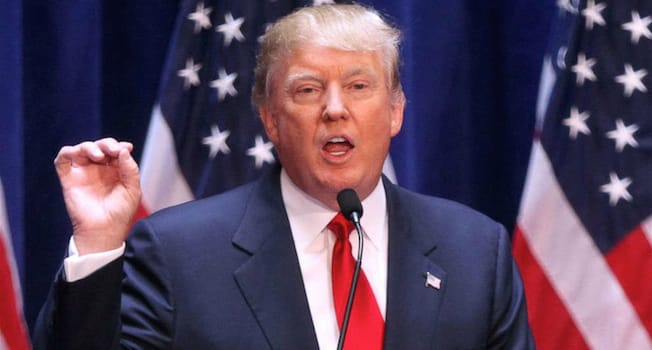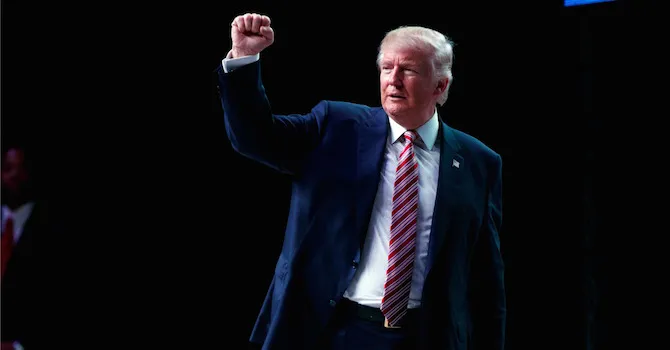
During the campaign, Donald Trump called the Affordable Care Act a “disaster” and said repealing the law would be a priority.
WASHINGTON — If Obamacare is repealed, what will replace it? That is the question in the aftermath of the election of Donald Trump as president.
Trump has vowed to “repeal and replace” the Affordable Care Act as his first act in office. If the effort succeeds, some 22 million fewer Americans would have health insurance, according to an estimate from the nonpartisan Congressional Budget Office.
Trump himself has acknowledged the need for a transition process, but he could reverse parts of the law without Congress’ involvement. He could, for example, use executive action to move to end the mandatory fines for people who choose not to buy insurance.
Having a Republican majority in the House and Senate would help in the drive to overturn the law. Major chunks of the ACA could be dismantled through the budget process known as reconciliation — which needs only a simple majority in both chambers. Repealing the entire law would take a 60-vote super majority in the Senate to overcome a Democratic filibuster. (The election left the GOP with 51 seats, Democrats with 48, and a runoff to decide a Louisiana seat). But under reconciliation, bills can be passed with a simple majority if they relate solely to spending.
Both House speaker Paul Ryan (R., Wis.) and Senate majority leader Mitch McConnell (R., Ky.), said after the election that repeal is a priority. “It is a pretty high item on the agenda,” said McConnell. “I would be shocked if we did not move forward to keep our commitment to the American people.”
Ryan said the ACA is an unpopular law that “is collapsing under its own weight. … This Congress, this House majority, this Senate majority has already demonstrated and proven we’re able to pass that legislation and put it on the president’s desk. The problem is President Obama vetoed it. Now, we have President Trump coming, who is asking us to do this. So with unified Republican government, we can fix this. We can fix these problems.”
House Republicans tried more than 60 times under Obama to overturn all or parts of the law following its 2010 passage. The statute also survived a Supreme Court challenge by a 6-3 vote.
A model for a reconciliation measure to derail the ACA emerged last fall with HR 3762, the “Restoring Americans’ Healthcare Freedom Reconciliation Act of 2015.” Vetoed by Obama in January, the bill would have cut Medicaid coverage obtained under the ACA by Americans near or below the poverty line. It would also have ended insurance subsidies for middle-income Americans and thrown out tax penalties for people who declined to get insurance. And it would eliminate new taxes helping to fund those programs. It was written to take effect at the end of 2017, so Obamacare programs wouldn’t instantly vanish.
Other elements of the ACA can’t be overturned through reconciliation. They include reforms to Medicare, allowing young adults under 26 to be covered under their parents’ plans, and barring insurers from turning down coverage for people with preexisting conditions. Those mandates are highly likely to remain in effect.
On the campaign trail, Trump advocated several actions that he said will let people purchase affordable health plans outside of the ACA’s online exchanges. They include tax-free health savings accounts (HSAs) that could let people save money to pay for medical costs, and letting them take their premiums as tax deductions. He also has said insurers should be permitted to sell policies across state lines to increase competition.
Trump could also change the exchanges to promote high-deductible health policies and HSAs. “He could change the details of how the marketplaces work,” Jack Hoadley, a research professor at Georgetown University’s Health Policy Institute, told NPR. “It’s all worked out through regulation. You could just suspend the regulations.”
The president-elect could also back the health care plan promoted by Ryan, which is a more detailed version of Trump’s plan.
Even if Trump fails to overturn the ACA, he could make it implode by refusing to fund it through the budget process.
“The only thing stopping that is, it’s a big deal to throw millions of people off insurance without offering something in return,” Austin Frakt, a health economist who runs the blog The Incidental Economist, told NPR.
The Commonwealth Fund estimated Trump’s plan would increase the number of people who lack insurance by as many as 25 million, and add up to $41 billion to the federal budget. The extra cost would come from creating tax breaks to encourage people to buy insurance while removing the fines for those who choose not to.
The transition being considered by Trump and others would allow time for talks with hospitals and insurers that have backed and gained from the ACA and now face significant financial setbacks. “I think they know you can’t yank the rug out from people,” Molina Healthcare Inc. chief executive officer J. Mario Molina told the Wall Street Journal.
Also, the Obama administration may try to establish regulations that would make it harder to derail the president’s signature legislation.







